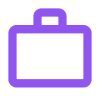In today’s rapidly changing world, it is no longer enough to compete solely on the basis of products and services. It is the people in an organization, and their ability to continually develop and learn, that are the real source of competitive advantage. Creating a strong learning culture is essential for companies that want to thrive in this dynamic environment. In this blog, we will elaborate on the importance of a learning culture within a company and how they contribute to the development and growth of both employees and the organization as a whole. A learning culture is an important part of the HR cycle. Want to design a modern HR cycle yourself? Then download our free e-guide and get started right away!
The power of a learning culture
A learning culture goes beyond trainings and workshops. It is a mindset that embraces learning and development as an integral part of business operations. Here are some reasons why a learning culture is so important:
- Continuous learning as the norm: In a learning culture, learning is not seen as a one-time event, but as an ongoing activity. Employees are encouraged to continuously acquire new skills and knowledge.
- Innovation and problem-solving skills: Employees in a learning culture are better able to come up with innovative solutions and tackle problems effectively. They are encouraged to ask questions, experiment and explore new ideas.
- Talent development and retention: A learning culture attracts and retains talent. Employees feel more engaged and valued when given the opportunity to develop.
- Flexibility and adaptability: In a rapidly changing world, the ability to adapt quickly is crucial. A learning culture promotes the adaptability of employees and the organization as a whole./li>
How do you build a learning culture?
Building a learning culture requires commitment, time and involvement at all levels of the organization. Here are some steps to consider:
- Leadership and commitment: The leadership team should emphasize the importance of learning and development and lead by example. Managers should be actively involved in learning activities.
- Access to resources: Ensure employees have access to necessary resources, such as training, mentoring and learning platforms.
- Recognize and reward: Reward and recognize employees who actively participate in learning initiatives. This can range from informal recognition to tangible rewards.
- Sharing and collaboration: Encourage knowledge sharing and collaboration. Let employees learn from each other and exchange ideas.
- Measure and evaluate: Use KPIs and measurements to track the impact of the learning culture and adjust as needed.
- Continuous improvement: A learning culture is dynamic and needs continuous improvement. Listen to employee feedback and continue to adapt the culture to changing needs.
The role of technology in learning cultures
Modern technology plays a crucial role in promoting learning and development within organizations. E-learning platforms, learning management systems (LMS) and advanced analytics tools can help facilitate, track and evaluate learning activities.
Integrate a learning culture within your organization with Learned
A learning culture drives development and growth within your company. By using the Learned platform, you can build the best performing teams through data. We also offer a variety of tools and templates for assessing and improving your employees’ competencies. Try Learned now for 14 days for free!

Learned facilitates objective evaluations. By creating multiple moments of measurement per year based on different themes – for example: the fit with your culture and goal achievement, you will gain objective insight into your low- and high performers.
Explanation illustration: Each evaluation shows how the employee scores on the various themes.




























